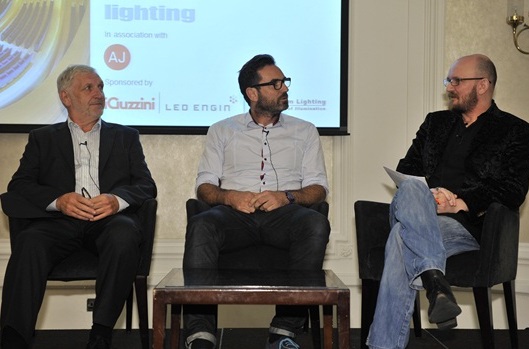The LED industry is fierce. For manufacturers to stay on top, they must make products that outshine their competitors. Therefore, manufacturers are continuously launching new products with high light outputs and longer lifespans to keep consumers coming back. Some of the claims however are too outlandish to be true.
 |
|
Panel judges left to right: Rod Bastable, Harry Triggs and Colin Ball (photo courtesy of Lighting Design Awards) |
During this year’s Lighting Design Awards, judges witnessed just that. Out of 105 products presented, only 38 were accepted due to unrealistic performance claims. The addition of a doctor of optical physics and a specialty in bonding and thermal engineering on the panel helped to weed out the truly inaccurate claims.
“Some people were coming in and quoting 70,000 hours, which was unrealistic. I think they were taking figures from the LED manufacturers and just transferring it to their product. In my view, I’d say only about 50 per cent of the products were realistically quoted,” said Harry Tiggs from manufacturer TM Lighting.
Some of the outlandish figures were easier to spot than others, said the judges. One manufacturer, for example, presented a product with a light output ratio of 95 percent, said Collin Ball from BDP. This high of a light output ratio is equivalent to a bare LED.
The judges instead were looking for products that would have a positive impact on the industry and provide new areas of development. They did not just want a lighting solution to be able to mimic a tungsten bulb, but to add more functions to it and making it something truly innovative.











